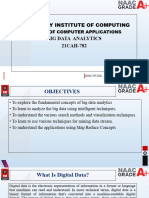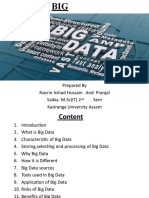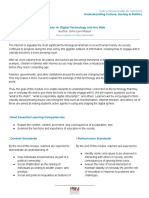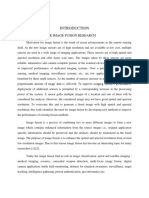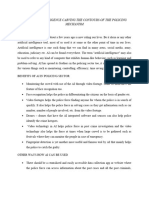0% found this document useful (0 votes)
23 views25 pagesIntroduction To Big Data
Big Data refers to large volumes of structured and unstructured data that traditional processing methods cannot handle. It encompasses four key dimensions: volume, variety, velocity, and veracity, highlighting the challenges and opportunities in data management. Technologies like Hadoop and MapReduce are essential for analyzing Big Data, which has applications across various sectors including healthcare, security, and manufacturing.
Uploaded by
hassanali2415Copyright
© © All Rights Reserved
We take content rights seriously. If you suspect this is your content, claim it here.
Available Formats
Download as PDF, TXT or read online on Scribd
0% found this document useful (0 votes)
23 views25 pagesIntroduction To Big Data
Big Data refers to large volumes of structured and unstructured data that traditional processing methods cannot handle. It encompasses four key dimensions: volume, variety, velocity, and veracity, highlighting the challenges and opportunities in data management. Technologies like Hadoop and MapReduce are essential for analyzing Big Data, which has applications across various sectors including healthcare, security, and manufacturing.
Uploaded by
hassanali2415Copyright
© © All Rights Reserved
We take content rights seriously. If you suspect this is your content, claim it here.
Available Formats
Download as PDF, TXT or read online on Scribd
/ 25



































